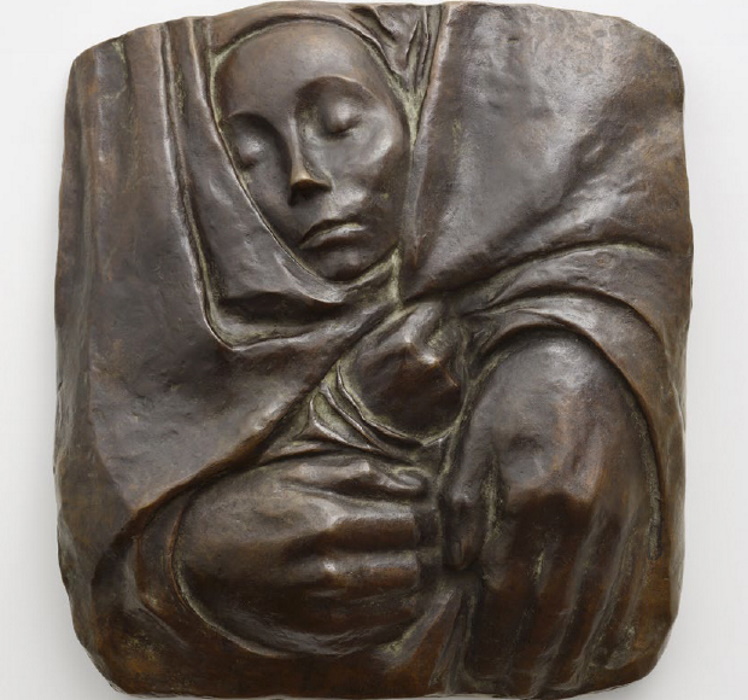In April 77 years ago, Käthe Kollwitz died in Moritzburg near Dresden, shortly before the end of the Second World War. Here the great artist spent the last months of her life in the “Rüdenhof”, an outbuilding of Moritzburg Castle, accompanied by her granddaughter Jutta and treated by the doctor Marianne Werker. On the evening of April the 22nd 1945, she noted heart failure in the death certificate. The graphic artist and sculptor Käthe Kollwitz left behind an extensive body of work that still touches people all over the world today.
Image above: Käthe Kollwitz, Selbstbildnis, 1921, Radierung, © Käthe-Kollwitz-Museum Berlin
Evacuated from her Berlin home in the late summer of 1943, the artist’s poor health became increasingly difficult for her. In November 1943, she wrote to the poet Gerhart Hauptmann, with whom she had been in lively exchange for decades, that she lacked the strength to cope with life any longer. The two artists shared a lifelong admiration for each other’s work.
In an appreciation for her 60th birthday in 1927, Hauptmann had eloquently expressed his appreciation:
“In the symphonies of the last four decades, she is the unwavering, strong, deep organ point. Whether there have been many women capable of such an outspoken, clearly defined, thoroughly formed art of confession? I don’t believe it.” (translated from German)

© Käthe-Kollwitz-Museum Berlin, Photo: Kienzle | Oberhammer
No longer being able to work depressed Käthe Kollwitz. Her life in this late phase mainly revolved around three things essential to her: her walking stick, her favourite poet Johann Wolfgang von Goethe and her son Hans.
Since the death of her husband Karl in July 1940, the walking stick metaphorically gave her the support she lacked. Her granddaughter Jutta, who was caring for her in Moritzburg, asked her to place the stick on her coffin. Goethe gave her a different kind of support. Throughout her life she felt a deep spiritual bond with the Weimar poet. Goethe’s life mask from 1807 hung above her bed. “The wonderful cast” was one of the few things that still delighted Käthe Kollwitz. As her eyesight began to fail, she had it handed to her and scanned it with her eyes closed, for “orientation”, as she called it. Her son Hans, however, was the most precious thing to her, she painfully longed for his visit. “Like a queen in exile, she appeared, despite all the destruction, of a compelling goodness and dignity. This is the last picture I have of her,” Hans described his last visit to his mother.

At the funeral in Moritzburg, Käthe Kollwitz’s coffin was decorated with white and red magnolia blossoms from the castle, woven into chains with ivy vines from the Rüdenhof. Instead of her walking stick, a small blue wreath lay on the coffin. In September 1945, Kollwitz’s ashes were transferred in accordance with her wishes to the family grave at the Friedrichsfelde cemetery in Berlin, where her husband and her brother Konrad Schmidt were already resting.
WHEN?
Friday, 1. April to 26th June 2022 (last day in Fasanenstraße)
Daily from 11 am to 4 pm
WHERE?
Käthe Kollwitz Museum
Fasanenstraße 24
10719 Berlin-Charlottenburg






